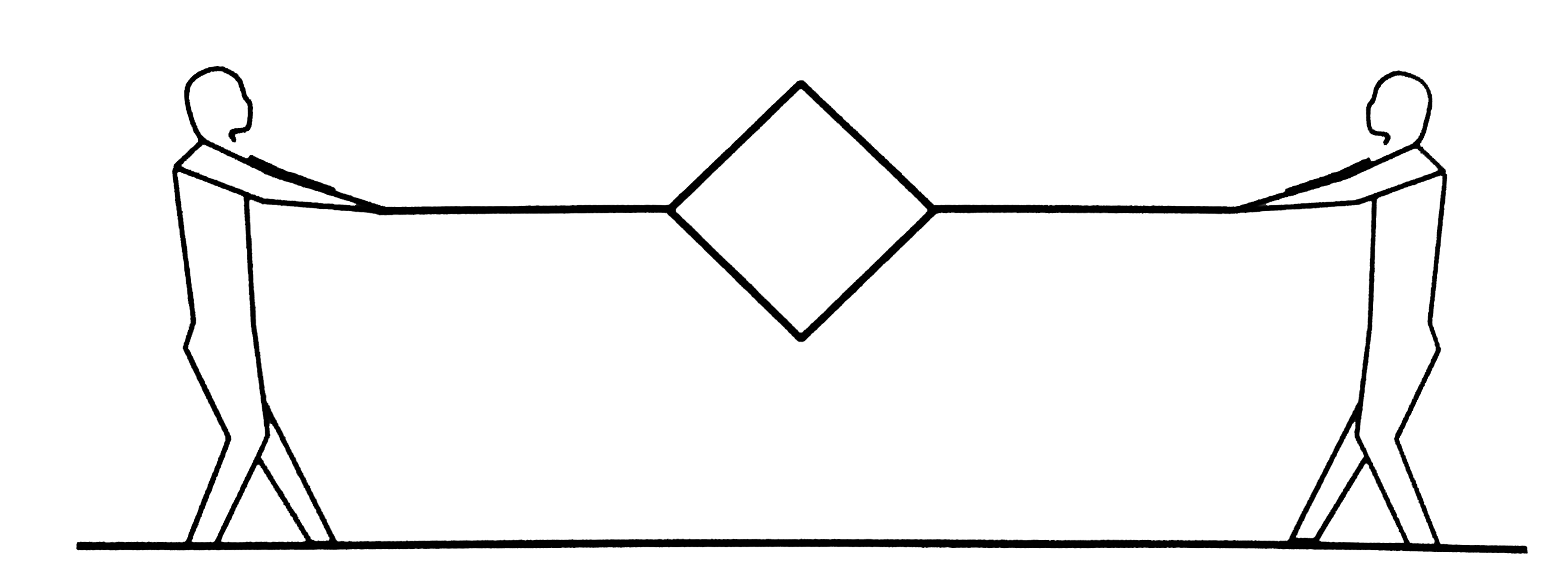Two chargea 2.0×10−6C and 1.0 x 10^(-6) C are placed at a separation of 10 cm. where should a third charge be placed such that it experiences no net force due to these charges.Solution in Gujrati
q1=2.0×10−6C
q2=1.0×10−6C
r=10cm=0.1m
F1q=9×109×1.0×10−6×qx2
F2q=9×109×10−6×q(10−x)2
F1q−F2q=0
So,
9×109×10−6×qx2=9×109×10−6×q10−x2
x2=2(10−x)2
x=5.9cm
From the rarger charge to the line joining the charge in the side to the smaller charge.

Topper's Solved these Questions
- ELECTRIC FIELD AND POTENTIALBOOK - HC VERMACHAPTER - ELECTRIC FIELD AND POTENTIALEXERCISE - Objective 2
8 Videos
- ELECTRIC CURRENT THROUGH GASESBOOK - HC VERMACHAPTER - ELECTRIC CURRENT THROUGH GASESEXERCISE - Exercises
23 Videos
- ELECTROMAGNETIC INDUCTIONBOOK - HC VERMACHAPTER - ELECTROMAGNETIC INDUCTIONEXERCISE - EXERCISE
9 Videos
Similar Questions
Mark out the correct potons.
View SolutionA discharge tube contains helium at a low pressure. A large potential difference is applied across the tube. Consider a helium atom that has just been ionized due to the detachment of an atomic electron. Find the ratio of the distance travelled by the free electron to that by the positive ion in a short time dt after the ionization.
View SolutionShown a metallic square frame of edga a in a vertical plane. A uniform magnetic field B exists in the space in a directon perpendicular to the plane of the figure. Two boys pull the opposite corners of the square ot deform it into a rhombus. They start pulling the corners t t=0 and sisplace the corners at a uniform speed u. (a) find the induced emf in the frame at the instant when the angles at these corners reduce to 60∘. (b) find the induced current in the frame at this instatnt if the total resistance of the frame is R. (c) Find the total charge which flows through a side of the frame by the time the square is deformed into a straight line.

View SolutionTwo particles A and B having charges 8.0×10−6C and −2.0×10−6C respectively are held fixed with a. separation of 20cm. Where should a third charged. particle be placed so that it dose not experience a net electric force?.
View SolutionTwo chargea 2.0xx10^(-6) C are placed at a separation of 10 cm. where should a third charge be placed such that it experiences no net force due to these charges.
View SolutionSuppose the second charge in the previous problem is −1.0×10−6C. Locate the position where a third charge will not experience a net force.
View SolutionTwo charges q and 3q are placed fixed on x-axis separated by distance 'd'. Where should a third charge 2q be placed such that it will not experience any force ?
View SolutionTwo charge q and –3q are placed fixed on x–axis separated by distance d. Where should a third charge2q be placed such that it will not experience any force ?

View SolutionTwo charge q and –3q are placed fixed on x–axis separated by distance d. Where should a third charge2q be placed such that it will not experience any force ?

View SolutionTwo-particles A and B having charges 8×10−6Cand−2×10−6C respectively are held fixed with a separation of 20 cm. Where should a third charged particle C be placed so that it does not experience a net electric force?
View SolutionTwo charges Q and -3Q are placed fixed on x-axis separated by a distance 'd' Where should a third charge 2Q be placed such that it will not experience any force?
View SolutionTwo charges q and - 3q are placed fixed on x-axis separated by distance'd'. Where should a third charge 2q be placed such that it will not experience any force ?
View SolutionTwo charges q and -3q are placed fixed on x-axis separated by distance d. where should a third charge 2q be placed such that it will not experience any force?
View SolutionTwo chargea 2.0×10−6C and 1.0×10−6C are placed at a separation of 10 cm. where should a third charge be placed such that it experiences no net force due to these charges.
View SolutionSuppose the second charge in the previous problem is −1.0×10−6C. Locate the position where a third charge will not experience a net force.
View SolutionTwo charges q and −3q are placed fixed on x-axis separated by distance d. Where should a third charge 2q be placed such that it will not experience any force ?
View Solution
